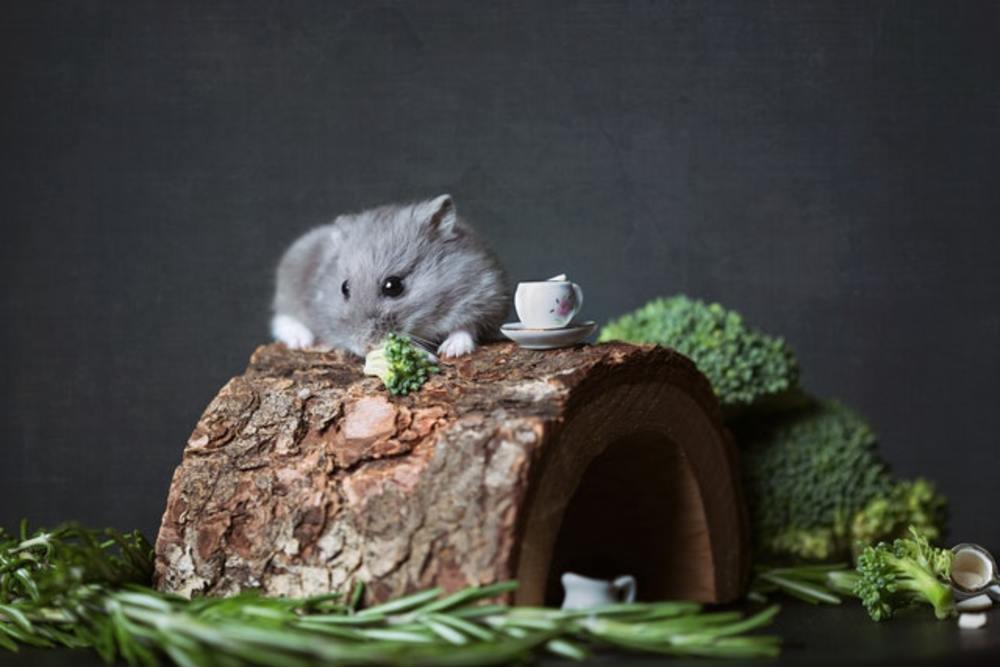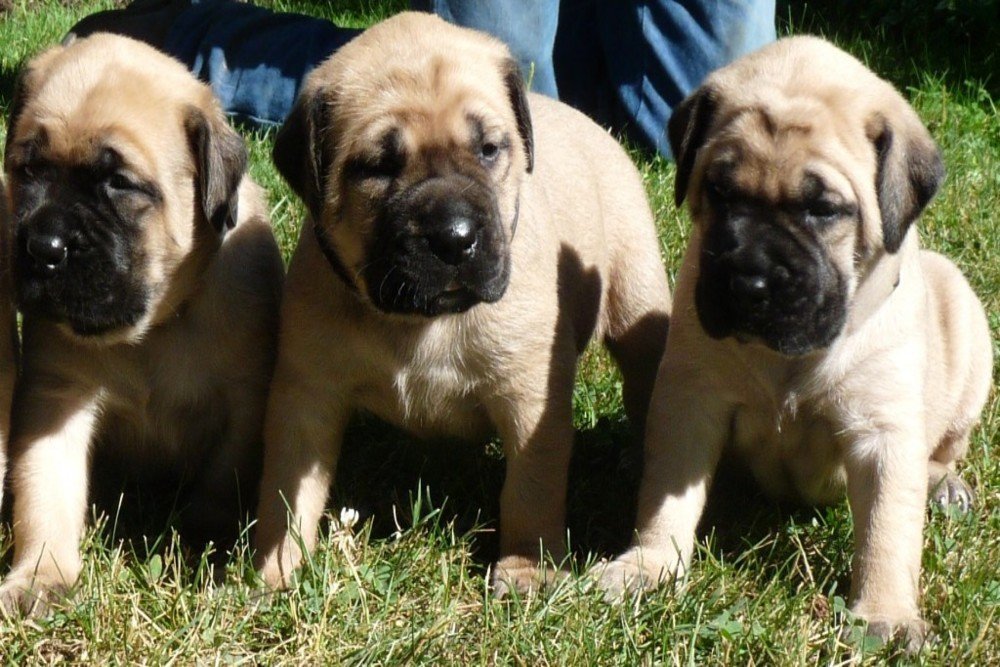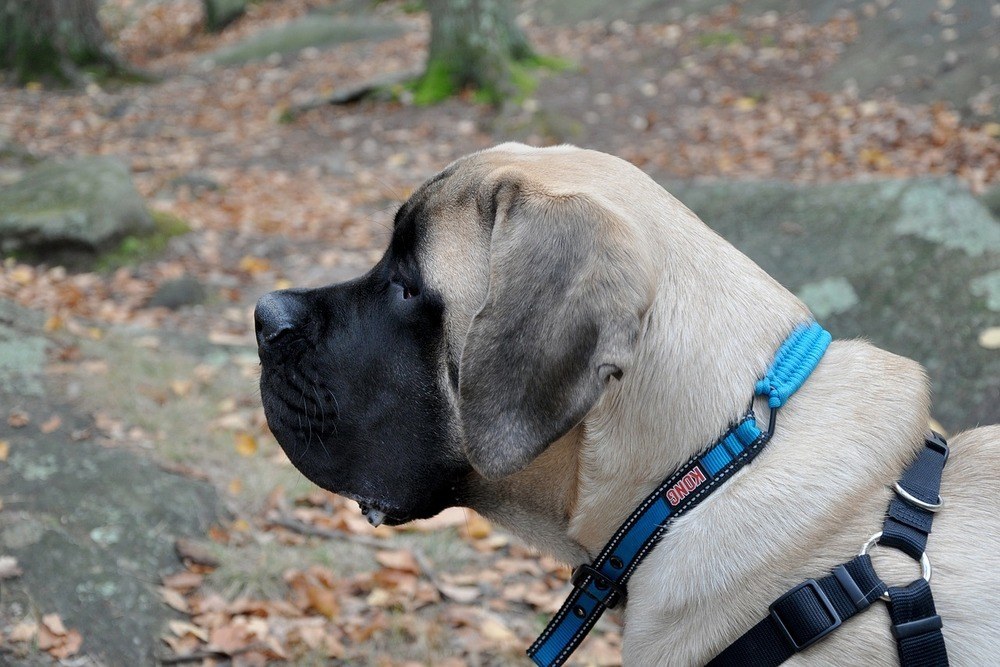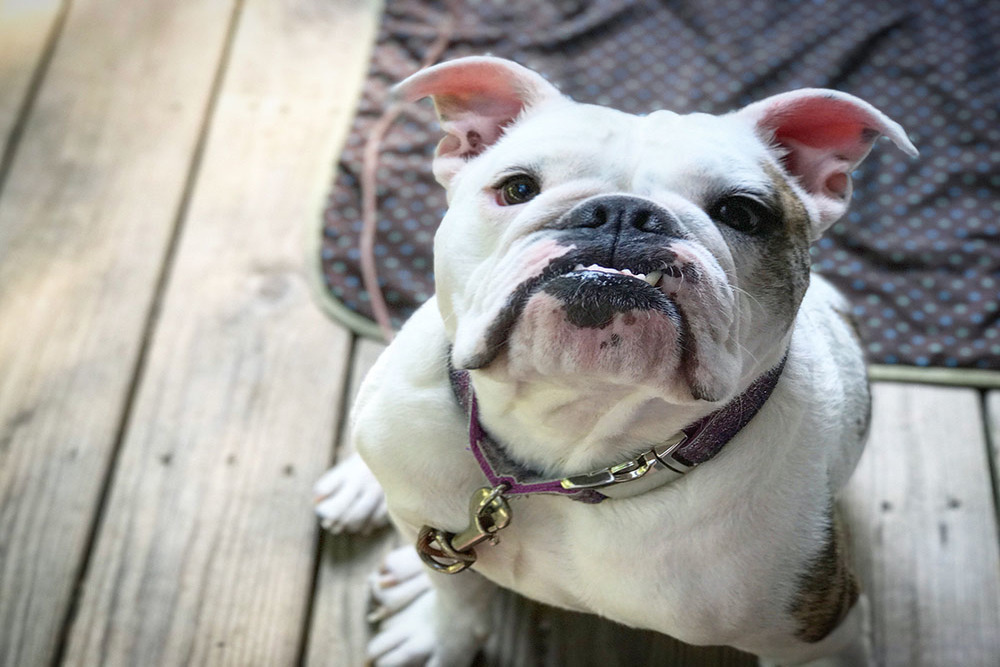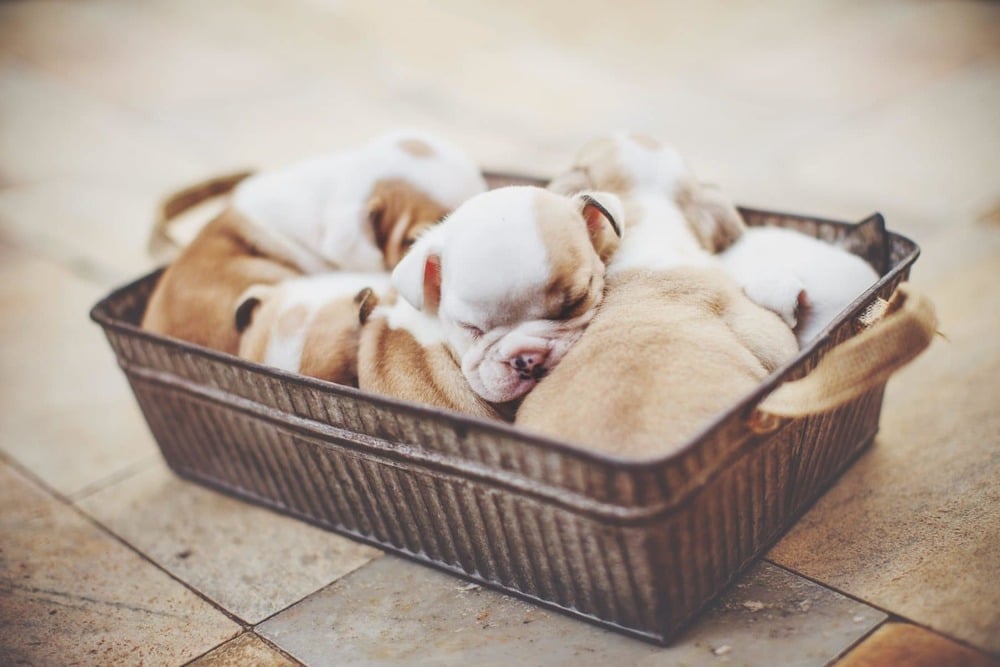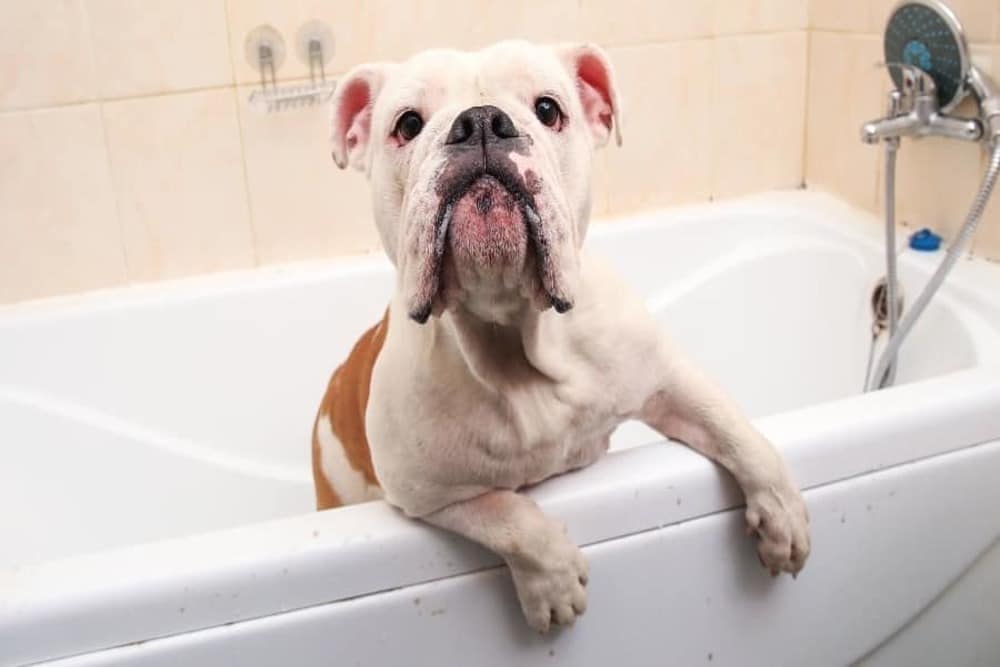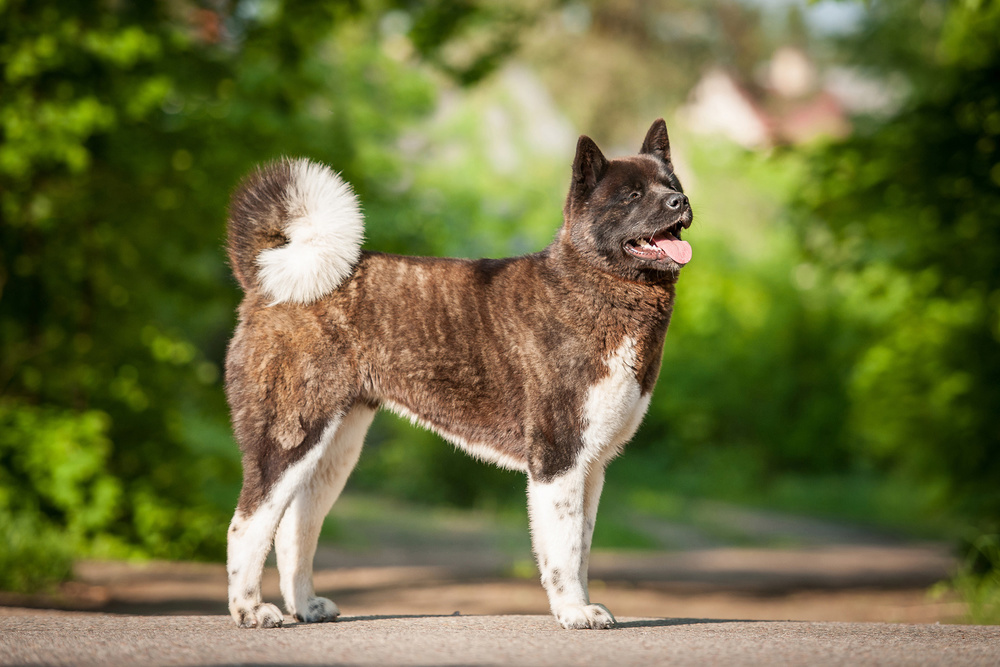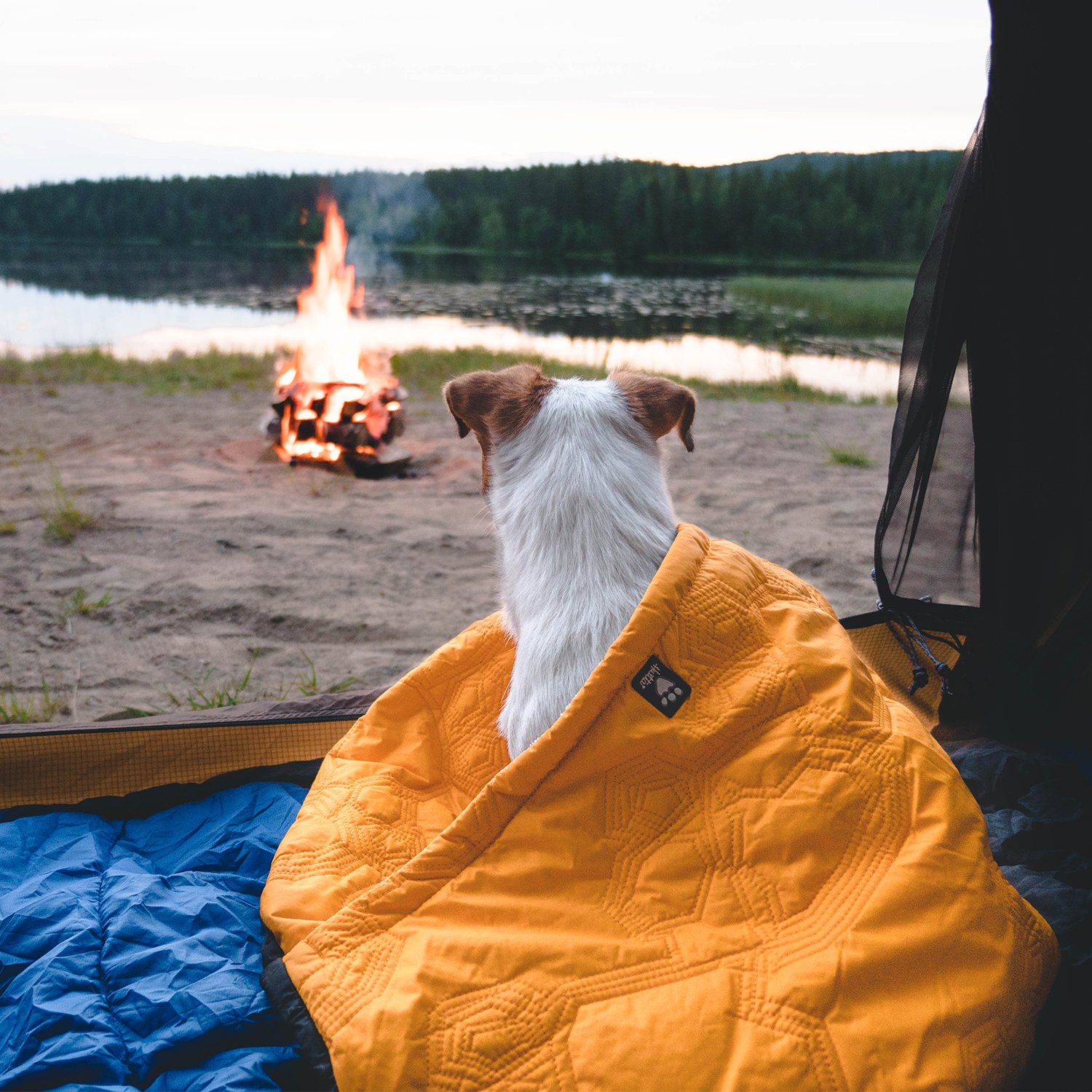Bulldogs can be quite charming when it comes to dogs. That being said, this breed can sometimes be rather difficult to handle. So, you’ll need to get yourself the best harness for French bulldog to deal with this issue.
Having big eyes, straight ears, and that adorable punched face really makes this breed one of the poutiest breeds of all. Not to mention the undying loyalty these breeds possess.
It’s an awesome breed for domestication, as it’s one of the smallest dogs. Similarly, French bulldogs are great as a residential pet.
However, bulldogs are rather a strong-willed pet, so you might face some trouble while caring for your beloved pet.
If you want to keep them in your grasp, then you’re in the right place. Because today I’ll let you know just how you can get yourself the best harness for French bulldog. What? Curious?
Read On!
Why Should You Go For a Harness Instead of a Leash?
Many of you pet owners tend to prefer a harness over a leash. Why? Well, a harness is one kind of leash but they are much stronger and more effective when it comes to stubborn pets. If your bulldog is somewhat on the tenacious side, you should definitely go for a harness. Let's see some of their benefits to clear your mind.
1. Get More Control
If you wish to control your bulldog and have more grip, then you need to invest in the best harness for French bulldog. Harnesses cover up most of their bodies, so they'll respond to your signals more than a leash.
2. Comfort Zone
Harnesses can give you the right amount of comfort you need to maintain your French bulldog. Dogs could get a little tensed up on a leash or even choke. On the other hand, harnesses can really feel more natural to them. It makes them more comfortable with the binding.
3. Lots of Choices
If you go for a harness, you'll get a lot of choices to deal with. They come in different styles, covering back, or front or both. Training French bulldog would be comfortable with a back clip. On the other hand, if your pet is on the stubborn side then, front clip is the way to go.
4. Helps to Breath
Bulldogs or specifically French Bulldogs have a hard time breathing. They tend to have a special syndrome called brachycephalic. This syndrome causes them serious breathing problems. Your precious bulldog doesn't have long snouts, and this deliberately makes them harder to breathe.
French Bulldogs have a flat face, and their palate is also soft. Naturally, their windpipes are much narrower than other breeds. That being said, they also have large tonsils. All of this together makes them quite uncomfortable while breathing.S
So, if you make them exercise, such as a simple walk or other training, they'll have a hard time catching their breaths. That's why they need all the help you can give him. If you use a leash in this sense, you'll probably end up hurting him in the process.
A harness would naturally protect your French bulldog from all these problems.
What to Consider While Buying the Best Harness for French Bulldog?
The Size
The first thing you need to consider is the size of the harness. You have to find the right balance between tight and too loose. A harness, which would hug your pet rather than suffocate him is the best way to go.
If you go for the bigger one your bulldog might slip away from them and later get into trouble. On the other hand, the too tight fit will injure your dog when you'll go for a walk or training session.
As Bulldogs seem to have a rather smaller size, in particular, it can a bit difficult to find the perfect size. That’s why before making your call, you should take all the necessary measurements.
Firstly, you’ll need to measure up the girth (width of the chest). For that find the widest part and measure it with a tape. This would likely be two inches down the front legs.
After you have noted down your first value, you have to measure the length of their chest area. For that, you'll have to start from one side of their body and go all the way to the back legs.
This will give you a close look at how to choose the perfect size for your French bulldog.
Neck Straps
Always avoid neck straps when it comes to your French bulldog. You’ll see many designs that come with a neck strap to help you get a better grip. But unfortunately, this helping feature can get a bit dangerous for your pet.
Instead of choking your dog get a no-pull design. This design will focus on the chest areas and avoid any type of discomfort. Also, as an added bonus you'll get a better grip on your dog's weight.
The Build and Materials
When these love creatures make up their mind to go somewhere, they do so regardless of their surroundings. This will literally mean, you would be chasing them non-stop. So, a high-quality harness should be your first call.
To get the best harness for French bulldogs you’ll have to invest in quality materials. Cheap ones would definitely deteriorate easily.
Going for leather, nylon or Oxford cloth would be perfect for this case. These materials happen to be really resistant to pulls and damages. Also, go for a harness that supports metal rings and plastic buckles.
Comfort
It's one of the most crucial parts of the best harness for French bulldog. If your dog isn't comfortable wearing it, he'd likely try to take it off and make the process even more difficult. Again, make sure it doesn't suffocate him in any way.
Getting one with added soft materials would help your bulldog to get the comfort he needs.
Padding is truly one of the best features of harnesses. Although it might not always be necessary, still having one won't hurt your dog either.
Design
Well, the design or color does matter on this occasion. We pet lovers always want our dogs to be more attractive in every situation. Using vibrant colors in this makes your dog safer. Drivers can see them from a great distance and be hitting them is out of the question this way.
Also, having reflective harness would be perfect for a night walk. This way you can find them even during the night.
Easy to Handle
Dogs never sit still while you're trying to make them wear something. This goes for harnesses as well. You'll get many harnesses deigns, but choose the one that is much easier to put on. This way the whole wearing a harness session would go without any extra hassle.
Best Harness for French Bulldog: 5 Top Picks
1. EcoBark Maximum Comfort & Control Dog Harness
When you’re trying for the best one it won’t be about the resistance but about the comfort and willingness of your French bulldog. Your pup needs to be familiar with it from the start or else later it might get a bit difficult.
That being said you’d want to look for a harness that super comfortable and easy to use. This is where EcoBark Maximum Comfort & Control Dog Harness comes into play!
These lovely harnesses look exceptionally great, along with being extremely comfortable. The harness is more of a hug than an equipment. The build is exceptionally well made, so you won’t have to worry about your stubborn love to become an escape artist.
The EcoBark Maximum Comfort & Control Dog Harness comes in different colors and sizes to add extra flexibility. Just choose the color you love the most on your pup. You can add a little fun to it by choosing a color that matches with your dog’s personality.
The colors include Black, Green, Yellow, Orange, Sky blue, and many more. The webbing is made out of recycled plastic bottles, which means it's extremely environment-friendly.
The vest is extremely lightweight, padded and of course breathable. This will allow your pup to walk about freely, being cool and healthy.
If you haven't ever tried out a harness, then this is the perfect one for you. Pups love this one as a beginner and get used it easily.
So, you should give it a try!
A Caution Note:
Before buying check out and measure the head size of your pup. As the head hole of this harness can’t be adjusted, too tight or lose would lead to additional problems.Again, it would stop fitting once he grows up. Find the right one and your French bulldog will love it.
Pros
- It uses webbing which is a non-toxic and lightweight polyester.
- Plush piping in the throat area for additional safety.
- The air mesh is comfortable and flexible for any movement.
- Uses reinforce hooks.
- Environment-friendly.
- Great for introducing harnesses for the first time.
- Available in different sizes and colors.
Cons
- Sizing is a bit confusing
- The head hole can’t be adjusted.
- Have to get rid of the vest if your puppy grows.
2. Ruffwear - Front Range All-Day Adventure Harness
This harness was designed to be comfortable through the day. It’s one of my personal favorites because it’s really gentle with my dog.
Why?
Well, there are many reasons for it. First of all, adjustability is super flexible and you can customize this harness any way you want.
Usually, French Bulldogs have a great physic with those pointy ears and extremely large head structure. Well, the structure isn't that big compared to other dogs, but it's bigger than his own body.
For this sometimes lifting with the harness could get ugly, but not in this case.
Ruffwear - Front Range All-Day Adventure Harness really makes sure that his proportion less head fits with it perfectly. The harness has several adjustable points to make sure the neck opening doesn’t hurt him or the chest area isn’t too loose or tight.
This really comes in handy for my dog.With this many adjustable features, it will be perfect for your Frenchie, regardless of his size.
Again, the harness comes with a padded body chest panel. This makes sure that even if he’s a puller, he won’t cut himself anywhere. The D-ring is on the back side of the harness and it’s strongly attached, which distributed the pull to the overall body.
This way you won’t ever lose control of your dog.
Another fun fact is that it also has a front webbing, which will allow to train him freely and safely.
Note:
Ruffwear - Front Range All-Day Adventure Harness is available in different attractive colors. These include Blue dusk, campfire Orange, Redberry, Twilight Grey, Meadow Green, Orange Poppy, Tillandsia Purple.
They are also coated with reflective strips to help you see your dog in night time walking sessions.
Pros
- Perfect for dogs with pulling and running off behavior.
- Additional durability and comfort.
- There are different hooking points available for different activities.
- Rings are quite strong and made out of webbing.
- Can adjust to fit any sized dog.
- ID tag pockets.
- Reflective colors for safe nighttime walking sessions.
Cons
- The pockets are a bit hard to find out.
- The label or space for ID is actually really tiny.
- Some minor sizing issues.
3. Kurgo Tru-fit Travel Harness
While you're traveling with your dog, you tend to restrain it, so that they can't distract you in any way. But what happens when you’re in a car crash? How do you save your beloved pooch?
Many of you don’t really know the difference between a walking harness and a protective harness. So, if you think that your beloved friend will be safe with only one type of harness then you’re completely in the dark.
Walking harnesses aren’t designed to save or minimize any crash impacts that may or may not happen.
Therefore, let’s take a look this wonderful harness that could save your dog’s life during any bad situation; Kurgo Tru-fit Travel Harness.
This wonder harness is equipped with features that are designed for traveling purposes.
This useful travel harness anchors your French bulldog to their seat so that they can stay where they are during any hard break or crash. It doesn't mean that they would be uncomfortable throughout the session.
No, these babies are extremely safe to use and won’t cause any harm to your dog or whatsoever. The seatbelt fixing points help in this regard.
It also, makes sure the dog doesn’t choke during an impact. This will allow him to walk away with fewer injuries rather than with a broken leg or rib.
Special Note:
You can also use this harness as a walking harness too! This means you'll be able to get two types of harnesses at the price of one. Isn't it great?
The Kurgo Tru-fit Travel Harness has been tested with 75 lb. weight to see how it performs. So, no worries there. It’s only available in two colors, black and red.
Pros
- Can be used for dogs weighing seventy-five pounds.
- A comfortable and safe traveling buddy.
- Use for both traveling and walking.
- Special D-ring will resist any kind of pull.
- Has a wide customizable size.
- The chest area has extra padding for more comfort.
- The rings are made of metal, to add durability.
- Can use it for any type of vehicle setup.
Cons
- A feisty dog can get all tangled up in the carabiner.
- Non-suitable for anxious dogs as it leaves rub marks.
- The harness can be a bit harsh or stiff in some cases.
4. Puppia Dog Harness
Puppia Dog Harness is a one of a kind harness, which is made of polyester. You can adjust the chest area and it also comes with a buckle system, which will enable you to release him quickly. As there is no point in using the walking harness at home, this feature would definitely come in handy.
The opening of the neck area is padded, so even if you put on a harness, he'll still be comfortable enough to be a good boy.
The material of this wonderful harness is breathable, light, and soft. This is simply because of the higher air mesh quality. That’s why your French bulldog would never protest while you’re putting this one on.
But before you put it on, measure your dog fist and adjust the harness according to that, to avoid any unnecessary discomfort and harm. Take care of the neck area more.
Many of you want a harness that can be washable in machine. While most of the harnesses on the market won’t allow this type of washing, you can wash Puppia harness in a machine without worrying about it.
However, hand washing is preferred every time. You can also dry it by air drying, or use a dryer.This harness will make sure all your walking session is full of fun and no hassles. With this harness, training would be a piece of cake.
Special Features:
This harness comes in many colors such as Blue, Yellow, Purple, Pink, green Camouflage, Orange, Brown, Beige, and Black. You will get a wide range of sizes with this one. It starts from XS to 2XL. You can see their measuring chart and choose the size from that for 100% accuracy.
Pros
- Can adjust the chest belt without any hassle.
- Easy release buckles.
- The neck area of the harness is padded for comfort.
- Washable in a machine.
- The vest can be adjusted in the neck or chest area.
- The air mesh is lightweight and soft.
Cons
- Sizes can be confusing to get. You should go for bigger ones.
- The belt is a bit loose, your dog could get tangled up.
5. Chai's Choice Best Outdoor Adventure Dog Harness
Chai's Choice Best Outdoor Adventure Dog Harness is another popular harness for your dog. These harnesses are extremely lightweight, comfortable and highly adjustable.
The no-pull design of this harness is just perfect from your Frenchie, as it won't choke him like leashes. Another great feature is that it's highly durable being scratch resistant.
The harness is exceptionally comfortable with the sponge padding in the front part. This also makes sure that your pooch doesn’t feel irritated in any way.
Adjusting this harness is super easy and quick.
What about the Colors?
They come in a wide range of colors including Black, Royal Blue, Orange, Green, Purple, Pink, Fuchsia, red, and Chocolate.
To make it even visible during the night time or low light environment, it has 3M reflective material to help you out.
Pros
- It’s exceptionally durable.
- The build is made to protect against scratches.
- Extremely easy to put on.
- Padding system adds an extra layer of comfort.
- You can adjust according to the need.
- Reflective color or material for night time walking sessions.
Cons
- Wrong sizes tend to hurt the armpit area.
- The vest loses up after some time. Have to be tightened every now and then.
The Best Pick
Choosing the best harness for French bulldogs can be really tough. If your dog is too sensitive or is a puller, this would deliberately mean that you must get the perfect harness. Bulldogs can get real tricky and if you think you can handle them without a harness, then you’re in the dark.
That being said, these 5 products will surely make your life much easier than before. All of these products are equipped with great features. But among all of them Ruffwear - Front Range All-Day Adventure Harness seems to be the top pick.
Other products such as Chai's Choice Best Outdoor Adventure Dog Harness and Kurgo Tru-fit Travel Harness can get a bit on the rougher side, if not maintained properly.
Also, EcoBark Maximum and Puppia Dog Harnesses have a few adjustment issues and can be a bit loose for your French bulldog after some time.
So, you see Ruffwear - Front Range All-Day Adventure Harness is the perfect pick for your French bulldog. Why? It fulfills all your buying needs:
- The Harness is extremely easy to handle.
- Made of a highly durable material.
- Padded neck and chest area for additional comfort.
- Available in a wide range of color.
- Adjustment is easy and accurate.
So, don't waste any more time, just give a try and see for yourself!



